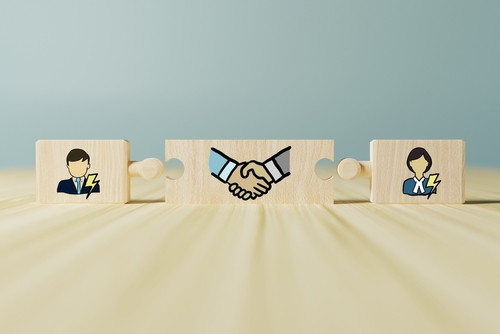The concept of the hard sell has fallen out of favor in recent years. There’s less talk of cold calling and upselling and more talk of providing value. We think less about closing the deal and more in terms of a sales funnel, a gentler coaxing of leads from innocence to experience and, one day, hopefully to a sale.
People famously hate cold calling – even salespeople hate it – and many sales professionals are relieved to have exited the era of the cold call. Surely we now have enough tools and technologies that we don’t have to ring people’s doorbells and leave them scripted voicemails.
However, somewhere along the journey from hard sell to sales funnel, we have lost a key skill in the seller’s toolkit: the close. Closing a deal is the difference between a conversation with a lead and a purchase, between inspiration and action. It’s why salespeople are called salespeople. So what are we struggling with?
Where Are Salespeople Going Wrong?
According to a survey of over 1,000 sales professionals, undertaken by HubSpot, 53% of sellers had relatively stagnant close rates between 2021 and 2022. If closing the deal is the core of their job, why is moving the needle on close rates so tough? Perhaps because closing is the most nerve-wracking part of the sales process, the part that often seems most mysterious and most at the whim of the customer.
In today’s B2B sales world, people are thinking a lot about building rapport and establishing trust. And no wonder, when research shows that only 3% of customers trust sales reps, while 71% of customers will actively choose to buy from a salesperson they trust.
Rapport and relationship-building seems to be where the frontier of sales ought to be. That’s why sales professionals today are conscious of who their target audience is, they know all about the demographics of their prospects, but they aren’t necessarily making as many sales as they should be or could be.
It might be time, then, to return to the classroom. Revisit Sales 101 and relearn the art of closing deals.
The Last Step
There are ways to fall back in love with deal closing, and they don’t have to involve cold calling. Consider the following:
1. Love the qualification stage
The stage that sets a salesperson up for success when closing a deal is the qualification stage, where the potential customer is evaluated to determine whether they are a good fit for the product or service being offered.
At this time, the salesperson should be asking questions to uncover the customer’s needs and wants, as well as their motivation for making the purchase. By understanding the customer’s motivations, the salesperson can tailor their approach, help build confidence, and ensure that the customer is ready to move forward with the purchase when an offer is presented.
2. Provide tailored value
The best way to build trust and rapport with a customer is by listening to their needs in the qualification stage and then using that information you’ve learned to offer them specific, helpful pieces of value. How can you show the customer that you’ve heard what their pains and struggles and hopes are, and how your product or service could add value to their life or business?
This is where trust and rapport-building come in. In the act of listening and providing value, you can forge a personal connection with a customer. Get to know them. Closing a deal doesn’t have to happen instantaneously. Take the time to make the sales process personal.
3. Ask questions
If you want to awaken potential customers to value they’re not already seeing, ask questions they don’t normally hear. This is a form of active listening and shows people that you care what they think and that you’re interested in the kinds of problems they’re having.
Unusual questions can get you closer to the sale by giving you pieces of information your competitors don’t have, insights you can then use to tailor your offering. A question like, “How is this problem affecting your team?” will open up the sales conversation to other problems and opportunities you weren’t aware of before.
4. Ask for the sale
The reason people are put off by sales reps and sales situations is usually the how and not the what. They’re not sick and tired of the product or service you’re offering, only the way you’re selling it. So if you follow the above steps and personalize your sales interaction, you can afford to ask for the sale. Articulate what you’re trying to achieve – you think they should buy this service.
You can also ask for other things; negotiate the offer. Ask: “Would x or y make a difference to you saying yes?” Offer discounts or other incentives to sweeten the deal and see if they work. Or offer to add a guarantee to the deal, making the customer feel more secure and more inclined to trust your company.
5. Care about the follow-up
After the deal is closed, a customer still needs to be assured of your business’ worth. You can help them feel good about what just happened by continuing the positive sales experience. So make sure to follow up after the negotiation process to ensure the customer is satisfied with the deal.
By the way, you can care about the follow-up even if you didn’t get the sale. There is time and space to offer something to a potential customer, even after they’ve given a “no.” For most salespeople, hearing the word “no” is the end of the line, the deflating signal that the chase is over, the game lost. For highly successful sales pros, though, they have learned to turn a “no” into the start of a new conversation.
Which one are you?





